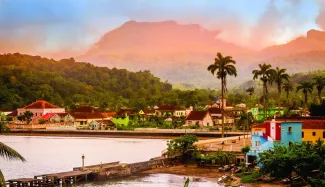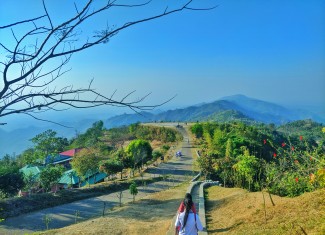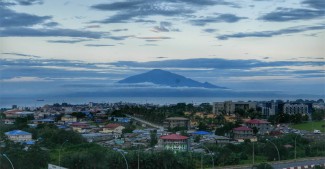Country working toward regional and global trade goals in a post-conflict scenario.
Becoming a member of the World Trade Organization (WTO) isn’t automatic – it’s a process that involves commitments and consensus, questions and responses, meetings and negotiations.
The accession process can be as quick as less than two years, in the case of the Kyrgyz Republic, or take as long as 18, in the case of the Seychelles, with factors both domestic and international influencing progress.
Somalia started on its accession path in 2016 with an application to the WTO Director-General. Now, in 2020, the country has made some strides forward. This includes submitting in April the required Memorandum on the Foreign Trade Regime (MFTR), a document that outlines the country’s trade and economic policies as well as trade agreements with other countries. Based on the MFTR, WTO members have submitted over 150 questions to Somalia that the country will be responding to.
“We decided to change the narrative that Somalia is only and will remain a humanitarian recipient and convert that to move into development and economic recovery. One of the main obstacles at the time was debt relief. We managed to attain that last March, after difficult benchmarks that we had to meet in terms of revenue generation and structural change in terms of finance and governance,” said Abdighani Jama, Lead Coordinator on Accession to the WTO Membership Process at the Office of the Prime Minister's Economic and Trade Unit.
“That has encouraged us to move to other areas. And one of the first was becoming a WTO member. So it was planning: first debt relief, second the WTO, third the African continent, fourth other institutions at the international level to improve our trade,” Jama said.
In accord
In October, another step forward occurred when Somalia’s Working Party Chairperson, Sweden’s Ambassador to the WTO Mikael Anzén, was confirmed. The first Working Party meeting is now slated for 2021. These meetings are key points where discussions and negotiations between WTO member countries and the applicant happen.
Anzén said, “We are chairing the Working Party and there is Swedish development assistance from our national development agency SIDA that goes in on a bilateral and multilateral level, and our National Board of Trade is a part of that helping with technical assistance, and then having a broad dialogue with donor communities and donor countries and interested organizations.”
“From a Swedish point of view this is not about us and Somalia only, it's about everybody who wants to support and pitch in with this process, so building a network of interested and supporting parties,” he added.
As a least developed country (LDC), Somalia has access to certain support during the process of becoming a WTO member, including from development partners and via bilateral assistance. There are also specific guidelines for LDC accessions in order to facilitate progress, and technical help from the WTO.
LDCs take on average 12 years and three months to accede, with the average for non-LDCs 10 years and one month.
“We have a lot of evidence that has shown that overall LDCs that have gone through the WTO accession process have performed better than the rest. Particularly within the context of Somalia as a post-conflict country, stability is very important from the trade and economic perspective,” said Maria Perez Esteve, Counsellor in the Accessions Division at the WTO.
Laying foundations
Joining the WTO offers developing countries and LDCs better access to major markets at lower tariff rates, and the promise of improved trade and economic growth.
“When Somalia got its independence, we used to export only primary goods. If we are able to join multilateral trade agreements at the WTO level we can work to export value-added goods. It is time to be part of global value chains,” said Ahmed Warsame, Director of the Trade and Marketing Department at the Somalia Ministry of Commerce and Industry.
“We want to increase our exports to international markets, including the European markets, the North American markets, the Asian markets. That is our objective. We also have reforms to do with our policies,” Warsame said. “It is important that in the near future when Somalia become stable we should have a complete set of rules, policies and agreements for our traders’ benefit, and enjoy global intellectual property rights.”
The accession process includes requirements on domestic transparency and clarity on policies and regulations.
“As a member of the WTO it will help us, particularly to take advantage of the so-called Blue Economy strategy that we are working on right now. Somalia has the largest coastal area in Africa – we're talking about 3,300 kilometres, with fisheries and marine resources,” Jama said.
He noted the country was unable to control fishing in its waters, and WTO membership would afford them better mechanisms to address such issues.
“If you look at the Horn of Africa, it has been a conflict-prone region. If you look at the other countries in Africa, they are ahead of us. They have established strong trade relationships through the East African Community. What we have been working for the last two years is Horn of Africa economic integration that will focus on three areas, one is trade, the other is infrastructure and the third is a human capital,” Jama said.
“I would call the Horn of Africa the last trade frontier between the big forces who will be part of it. This is due to the accessibility, particular the Red Sea and the Indian Ocean, and the close proximity to east and west linkages. Somalia is the most advantageous here as a logistical hub,” he said.
Model accession
Those involved in Somalia’s WTO membership process are looking to the case of Liberia as an example. Liberia, a post-conflict country and an LDC, acceded in 2016 following an eight-year process. Sweden’s Ambassador to the WTO at that time, Joakim Reiter, was the Chairperson of the Working Party.
“With our support to Somalia now, we are drawing from the experience with Liberia, with some things similar and others different. Of key importance for all acceding countries is their engagement and their organization. It's a process for acceding countries to learn how the WTO works and what the rules are,” Anzén said.
Esteve noted that membership can contribute to peace-building efforts in fragile and conflict-affected environments. Countries such as Afghanistan and Liberia have used the idea of attaining just and sustainable peace through economic stability as a fundamental motivation for becoming a WTO member.
The accession process can help build domestic institutions on the pillars of non-discrimination, transparency and the rule of law, and according to WTO evidence, the 36 countries that acceded to the WTO after 1995 have, on average, experienced faster growth – both in comparison with the years prior to WTO accession and when assessed relative to the world average.
As for next steps, Somalia has to appoint a Chief Negotiator for WTO Accession, respond to the questions from WTO member countries, draft a legislative action plan, and continue through a series of multilateral, plurilateral and bilateral negotiations.
Warsame said that Somalia is a member of the Common Market for Eastern and Southern Africa (COMESA) and has approved ratification of the African Continental Free Trade Area (AfCFTA), and that from this experience the Somali government understands the commitment and political will needed.
Speaking of his country’s trade progress, Jama said, “The key for us is the capacity. I think there are two areas we lack: number one is human resources and the other is financial resources. Somalia has a shortage of trade lawyers and trade specialists. That we are trying to accelerate. We hope in four or five years we will be successful, and all our efforts will be Somali owned and Somali driven.”
If you would like to reuse any material published here, please let us know by sending an email to EIF Communications: eifcommunications@wto.org.



